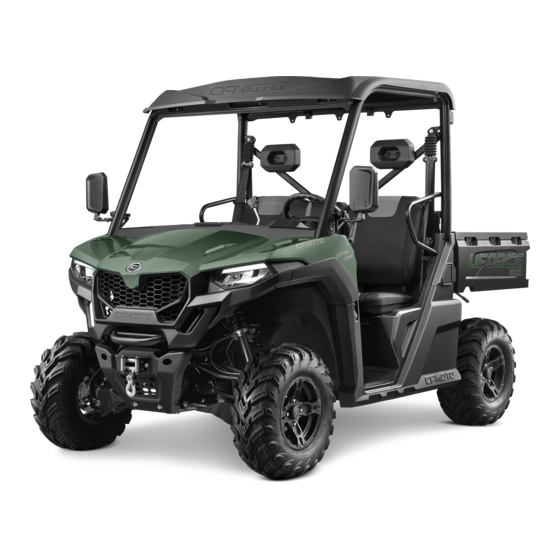
Table of Contents
Advertisement
Quick Links
- 1 Table of Contents
- 2 Specifications Specifications
- 3 Controls and Features Controls and Features
- 4 Cvt System Cvt System
- 5 How to Avoid Cvt Drive Belt and Clutch Failures How to Avoid Cvt Drive Belt and Clutch Failures
- 6 Dashboard Indicators and Warnings Dashboard Indicators and Warnings
- Download this manual
Advertisement
Table of Contents

















Need help?
Do you have a question about the UFORCE 600 2022 and is the answer not in the manual?
Questions and answers
i want list for all fuses and relays and there purpose and location
The CF MOTO UFORCE 600 2022 has a 40 Amp main fuse and a 40 Amp EPS (Electronic Power Steering) fuse located next to the battery. The main fuse protects the vehicle's electrical system, while the EPS fuse is specifically for the power steering system. If a fuse is blown, turn off the main switch and replace it with a fuse of the correct amperage. If the new fuse blows immediately, contact a dealer.
For relays, if operation, replacement, or diagnostics of a relay is needed, it is advised to contact a dealer.
This answer is automatically generated
Opc goes off every time foot off throttle on Cfmoto force 600. Not moved from seat